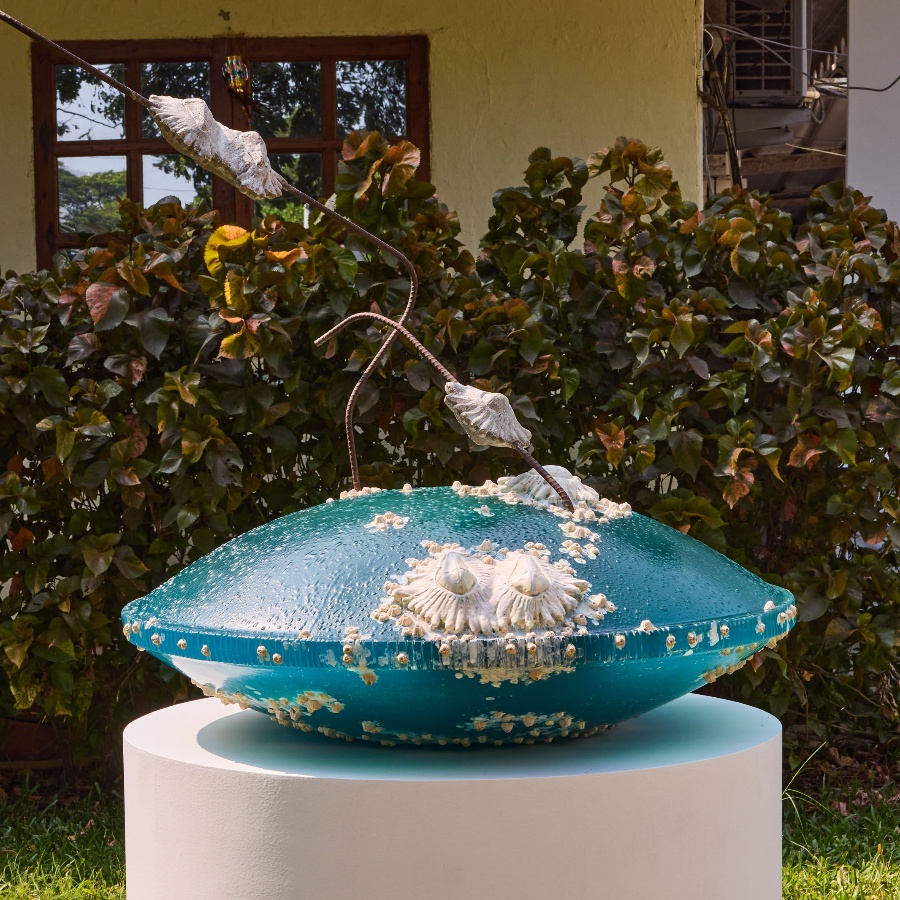Right off the bat, it is clear that colour is central to the STAIN CANON exhibition at Mumbai’s Gallery XXL. The exhibition poster is a vibrant clash of neon pink, yellow, and blue. The preview invite announces that the dress code for the opening is “only colour” and “a spray can might await you” if you don’t abide. Upon entering the space, you see white walls splashed with bright, multicoloured art in a variety of mediums—from crochet to objects, prints to even a GIF displayed on an iPad screen. Considering the title of the group exhibition, this penchant for colour is hardly surprising: while stain literally means ‘tinge with a colour different from the natural one’, canon refers to ‘a general law, rule, or principle’. By featuring Anikesa Dhing, liactuallee, and Priyanka Paul—three AFAB (assigned female at birth) artists who frequently work with vibrant colours and a variety of mediums to draw attention to heavy subjects—STAIN CANON questions the concept of kitsch and what is considered acceptable within the ‘art institution’.
ADVERTISEMENT
Laxman Rekha by Anikesa Dhing
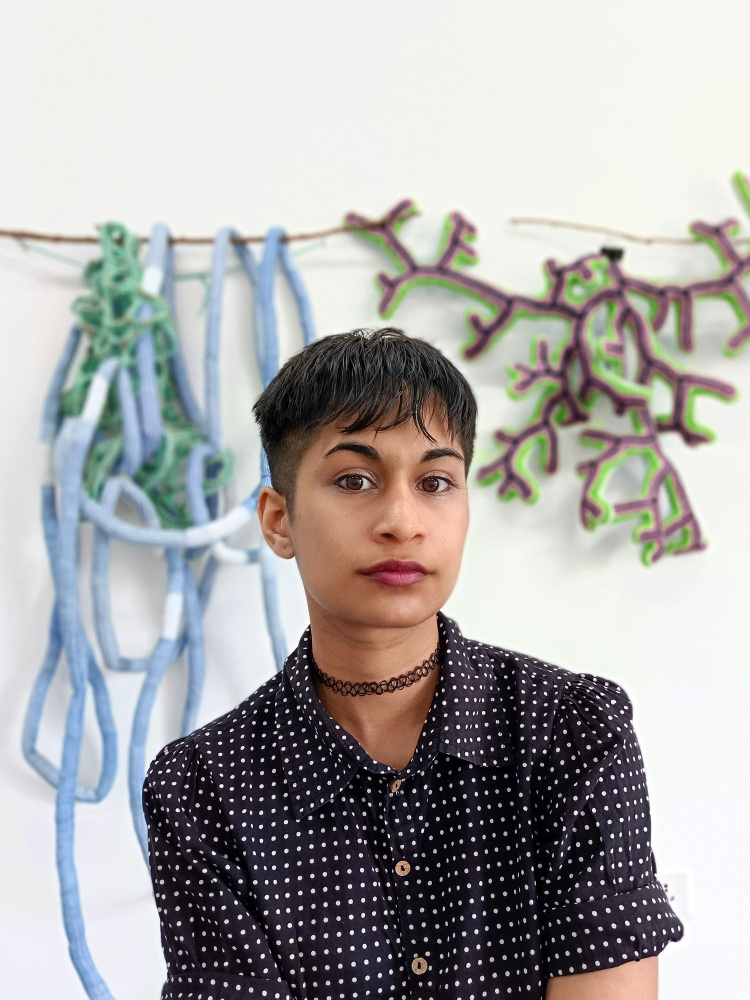
liactuallee
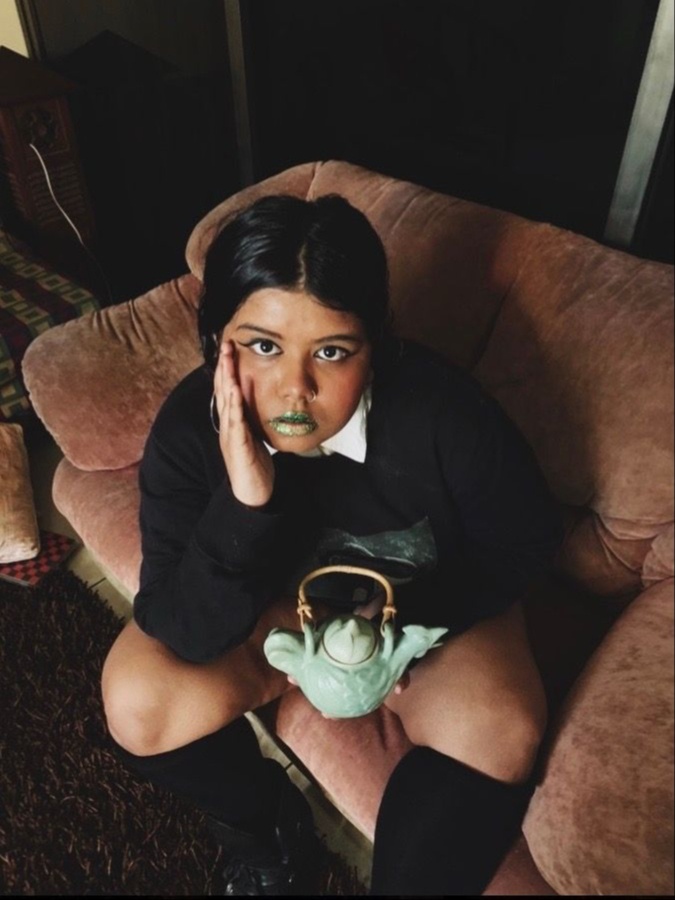
Priyanka Paul
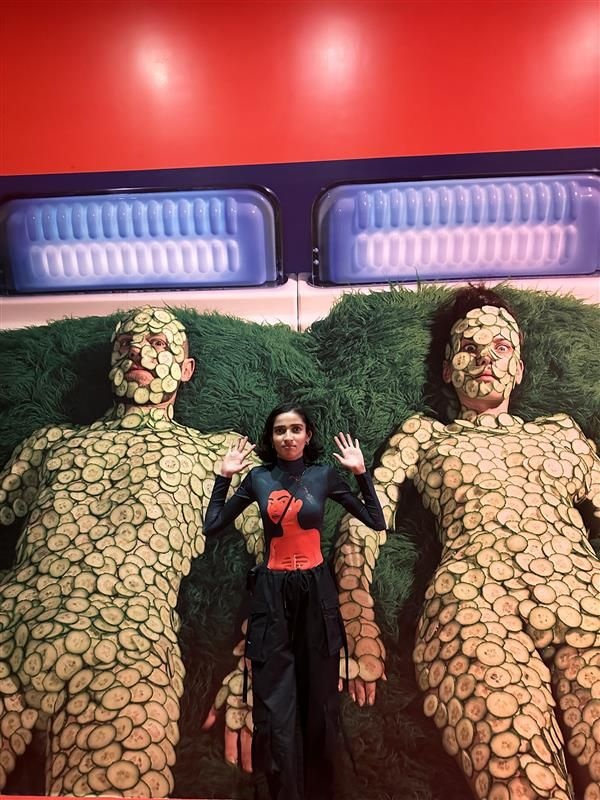
Anikesa Dhing
“Kitsch has always been seen as low art in a landscape dominated by men,” shares exhibition co-curator, Sarah Malik. “We wanted to challenge that notion by presenting these works in a formal structure that can often be difficult to access and has historically excluded plural identities.” It is for this reason that the exhibition, using fantastical, memory-based, and intersectional narratives, imagines origin myths that are not written by men. By doing this, it is creating a parallel universe within the four walls of XXL.
While Dhing, liactuallee, and Paul’s work is visually harmonious, it is not just their use of colour that ties the exhibition together; it also the the idea of time as a marker of history. Dhing’s practice, for example, focuses on how inanimate objects hold memories and emotions within them, thus exploring the concept of psychological time. The 26-year-old Vadodara-based artist’s work has been displayed at Method India, Space 118, and The Ark Foundation of Arts. Dhing recently completed the Khoj International Residency in collaboration with Misk Art Institute, where she designed a yarn and poly-fill chair titled ‘fall-ing.’ Constructed for anything but to be sat on, the chair challenges the notion that objects are only valuable for their practical use. This sentimental attachment to materials is a recurring theme in Dhing’s work: an embroidery titled ‘Laxman Rekha’, displayed at XXL, showcases everyday items such as fans, utensils, and pillows stitched onto cotton in bold pastel colours. Despite the mundane nature of these objects, the setting feels intimate and the deliberate erasure of human beings incites nostalgia, marking “the absence of a presence”.
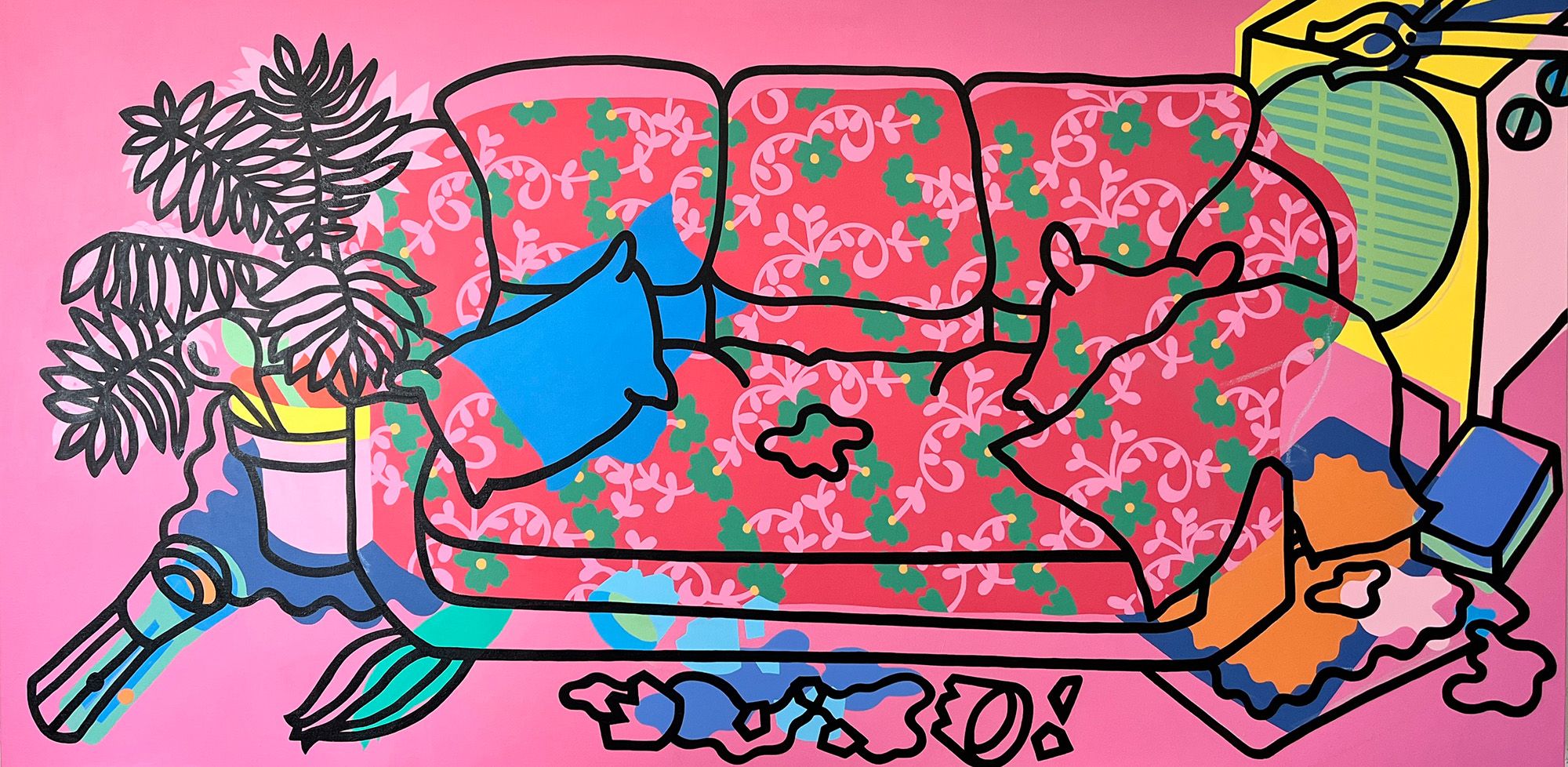
If Dhing’s work is stunningly intimate, liactuallee presents a more escapist vision, exploring alternate realities using fibre and form. The artist’s upbringing between Asia and Eastern Europe, education in America, and identity as a queer person led to a constant search for belonging that motivated them to escape the confines of their condition using art. “Their work looks at fantastical time, showing us magical creatures through a microscope,” Malik explains. Through repetitive gestures and rearticulation, liactuallee, now based in Mumbai, constructs environments grounded in hope and utopian visions of “future worlds where they do not struggle to be their amorphous self”. In one corner, a piece titled ‘Interactive Yarn Ball’ encourages visitors to ‘Hold. Pull. Loop. Repeat.’ This action creates a sense of participating in the artist’s imagination. As a yoga teacher, liactuallee hopes for exactly this: that their art remains meditative, giving them as well as viewers the opportunity to regenerate and reimagine their own identities.
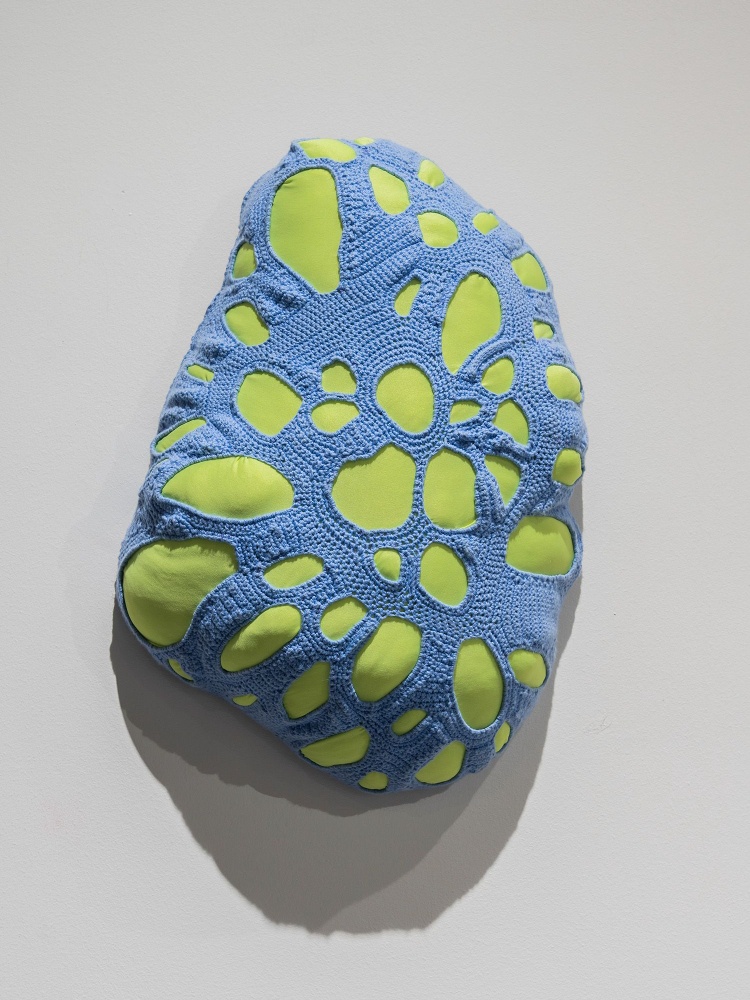
Kapusta by liactuallee
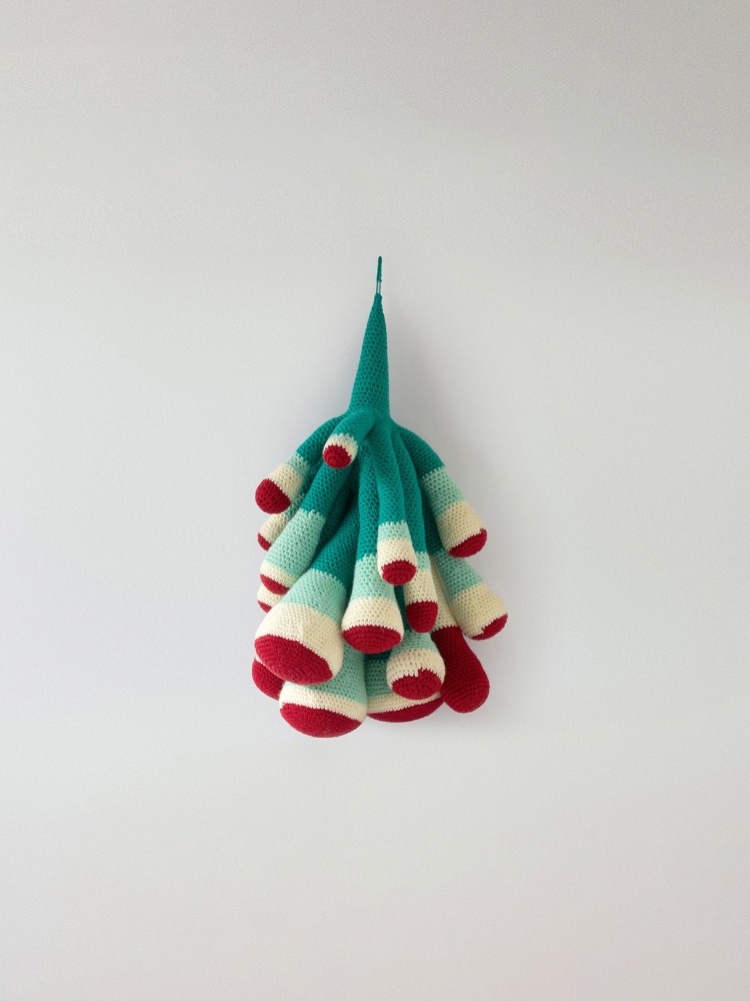
Maligned Protuberance by liactuallee
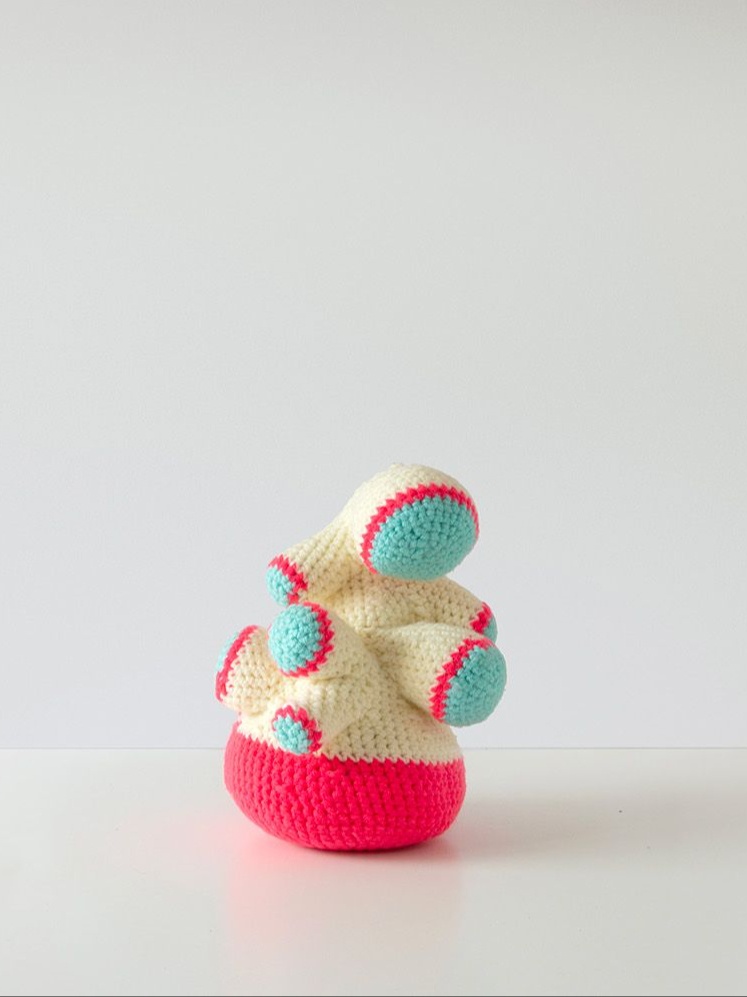
Perturbed by liactuallee
For Priyanka Paul, too, identity is a central creative theme. The 25-year-old’s work remains deeply vulnerable, honouring their feelings and lived experiences informed by their queer, Ambedkarite, anti-caste sensibilities. Paul effortlessly connects the personal to the political, writing ‘From the Margins’ in a chalkboard and acrylic piece displayed at XXL: “Even my shadow is political.” The artist, who has been published with Google, Twitter and the National Campaign on Dalit Human Rights, frequently uses humour and poetry in their work, bringing a sense of irreverence to the institution of art. Paul’s practice traverses history, the modern world, and the future, interrogating “the basis of systemic past beliefs of current beings and how future imaginations are shaped by it”. By doing this, the Mumbai-based artist looks at time through a sociopolitical lens. This theme is best seen in two stunning holographic prints at XXL titled ‘Babasaheb in the Future’, which reimagine the revolutionary leader as a robotic, sci-fi hero. Paul’s digital GIF about the effects of social media is another highlight: its images, ranging from a sinister eye to a decorative font saying ‘GRWM’, flicker and rotate at a stressfully high speed, reflecting the harmful pace at which we now consume content.
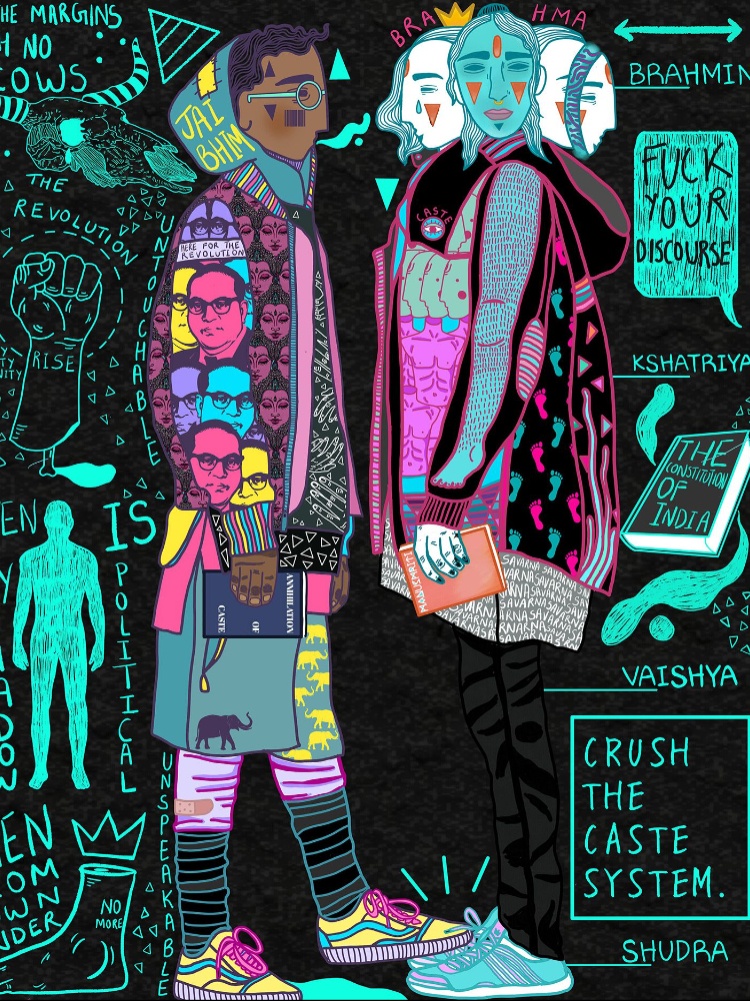
From the Margins by Priyanka Paul
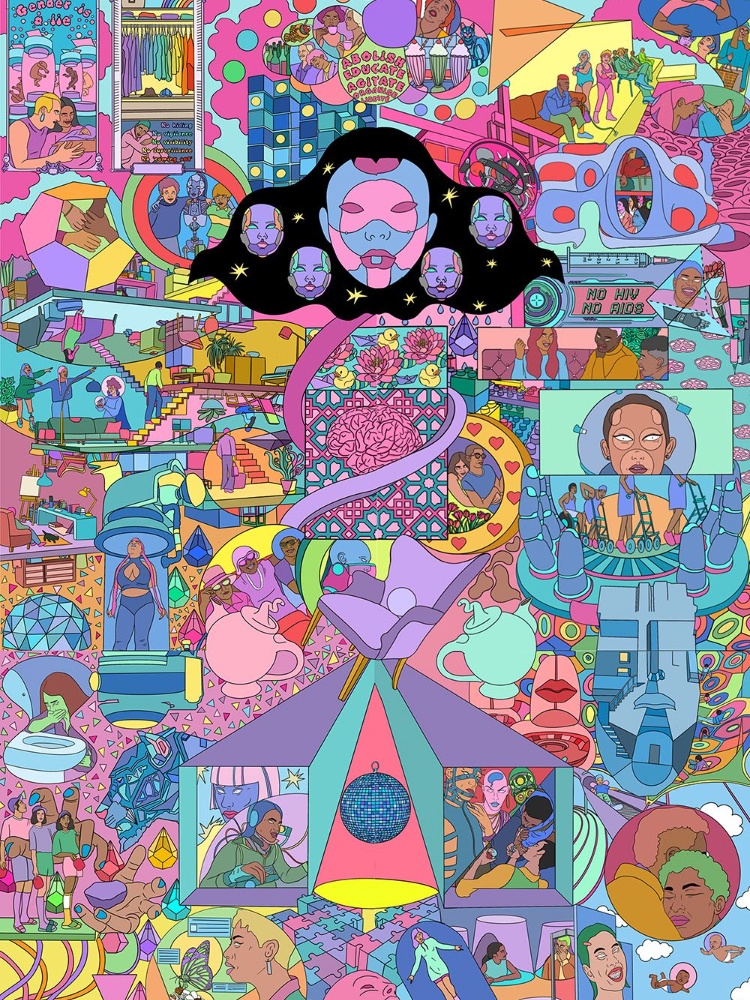
Party at the end of Gender Normativity by Priyanka Paul
With STAIN CANON, three contemporary artists, through independent and varying practices, explore the fast-changing world in which everyday items like forks and pillows carry just as much weight as fantastical creatures and technology-centred sci-fi futures. Anikesa Dhing, liactuallee, and Priyanka Paul come together to form a new kind of origin myth. One that is not just vibrant, but also vulnerable, queerer, and futuristic. One that makes space for identities that are plural and personal.
STAIN CANON is on at Gallery XXL in Mumbai till December 29, 2024


